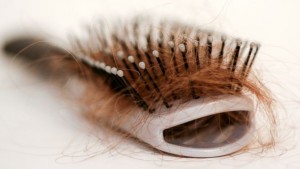Hair is constantly growing, with old hairs falling out and being replaced by new ones. Some cancer treatments make people lose some or all of their hair, most often in clumps during shampooing or brushing. Sometimes, clumps of hair are found on the pillow in the morning.
It’s normal for both men and women to feel upset about losing their hair. It helps to know that hair grows back, and you can take steps to make its loss less of problem for you.
Hair is lost when chemotherapy drugs damage hair follicles, making hair fall out. It can be hard to predict which patients will lose their hair and which ones won’t, even when they take the same drugs. Some drugs can cause hair loss on the scalp and the loss of pubic hair, arm and leg hair, eyebrows, and eyelashes. Some drugs cause only the loss of head hair. Radiation therapy to the head often causes scalp hair loss. Sometimes, depending on the dose of radiation to the head, the hair does not grow back the same as it was before.
If hair loss is going to happen, it most often starts within 2 weeks of treatment and gets worse 1 to 2 months after starting therapy. Your scalp may feel very sensitive to washing, combing, or brushing. But hair often starts to grow back even before treatment ends.
What the patient can do
- If you think you might want a wig, buy it before treatment begins or at the very start of treatment. Ask if the wig can be adjusted – you might need a smaller wig as you lose hair.
- If you buy a wig before hair loss begins, the wig shop can better match your hair color and texture. Or you can cut a swatch of hair from the top front of your head, where hair is lightest, to use for matching.
- Wigs may be partially or fully covered by your health insurance. If so, ask for a prescription for a “cranial prosthesis.” Do not use the word “wig” on the prescription.
- If you’re going to buy a wig, try on different styles until you find one you really like. Consider buying 2 wigs, one for everyday use and one for special occasions.
- Synthetic wigs need less care and styling than human hair wigs. They also cost less and may be easier if you have low energy during cancer treatment.
- Some people find wigs are hot or itchy, and use turbans or scarves instead. Cotton fabrics tend to stay on a smooth scalp better than nylon or polyester. Wear a hat or scarf in cold weather to cover and stay warm.
- Use a broad-spectrum sunscreen with a sun protection factor (SPF) of 30 or higher and a hat to protect your scalp from the sun.
- Be gentle when brushing and washing your hair. Use a wide-toothed comb.
- Hair loss might be somewhat reduced by avoiding too much brushing or pulling (which can happen while making braids or ponytails, using rollers, blow drying, or using curling or flat irons).
- Wear a hair net at night, or sleep on a satin pillowcase to keep hair from coming out in clumps. Be gentle with eyelashes and eyebrows, which might also be affected.
- If the thought of losing your hair bothers you, you might choose to cut your hair very short or even shave your head before it starts falling out.
- When new hair starts to grow, it may break easily at first. Avoid perms and dyes for the first few months. Keep hair short and easy to style.


